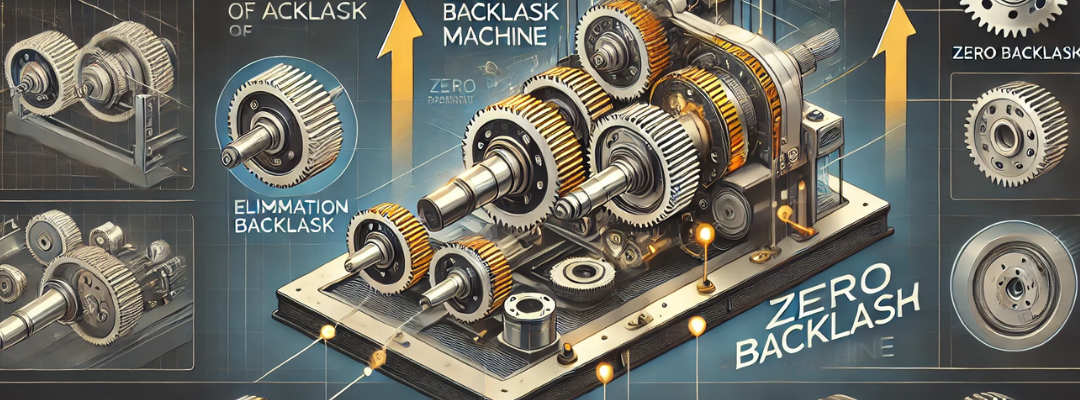A zero-backlash machine refers to a system designed to eliminate or significantly reduce backlash, which is the unintended movement or play that occurs between mechanical parts during direction changes in machines, especially in systems with gears, screws, and motors. Backlash typically happens due to gaps or looseness in mechanical components, such as gears, ball screws, or bearings. A zero-backlash machine ensures that these gaps are eliminated, allowing for precise, accurate movement and positioning.
Function of a Zero Backlash Machine
- Eliminates Unwanted Movement: Zero-backlash mechanisms ensure that there is no free movement or play between components when the machine changes direction. This helps maintain precise control of the motion system.
- Improves Accuracy: By eliminating backlash, the machine ensures exact positioning, which is especially important in applications that require fine tolerances and high accuracy, such as CNC machines, robotics, and precision manufacturing.
- Enhances Repeatability: A zero-backlash machine consistently returns to the same position during repeated movements, improving the repeatability of the machining or positioning process. This is vital in automated production where consistent results are needed.
- Ensures Smooth Operation: By removing the play between gears or mechanical parts, zero-backlash systems provide smoother, vibration-free motion, which can reduce wear and tear on the system and extend the life of components.
- Boosts Speed and Responsiveness: A machine with zero backlash responds more quickly to input commands, as there is no delay caused by mechanical gaps. This increases operational efficiency and the speed of movements.
Importance of Zero Backlash in Machines
- Precision in Machining: In applications such as CNC machining, precision is crucial for creating parts with tight tolerances. Zero backlash ensures that the machine moves to the exact position without any errors caused by mechanical play.
- Critical for High-Speed Applications: In high-speed machining or automation systems, any delay caused by backlash can lead to inaccuracies and wasted time. Zero backlash is essential for maintaining precision at high speeds.
- Better Surface Finish: In CNC machines or other precision equipment, backlash can cause inaccuracies that negatively affect the surface finish of machined parts. Eliminating backlash results in smoother and more consistent surface finishes.
- Increased Component Lifespan: Reducing backlash also minimizes the shock and stress on mechanical components like gears and ball screws, which can wear out faster when subjected to jerky, imprecise movements. A zero-backlash system can lead to a longer lifespan for these components.
- Improved Automation and Robotics Performance: In robotics and automated systems, precise control over movement is essential for tasks such as assembly, handling, or precise placement of objects. Zero-backlash mechanisms improve the overall performance of these systems by eliminating positional errors.
- Enhances Feedback Systems: In systems with closed-loop control (like servo motors), zero backlash ensures that the feedback from encoders or sensors accurately reflects the machine’s position, leading to more accurate control over motion and adjustments.
Common Applications of Zero Backlash Systems
- CNC Machines: For high-precision machining tasks where backlash could cause dimensional inaccuracies.
- Robotics: For smooth and accurate movements in automation and robotic systems.
- Servo Mechanisms: Where precise control of movement is required without delay or overshoot.
- Precision Manufacturing Equipment: In industries like aerospace, automotive, or medical device manufacturing, where small deviations in part dimensions can lead to failure.
Overall, zero-backlash machines are crucial in any application that demands high precision, accuracy, and repeatability, helping industries meet tighter tolerances and improve the quality of their products.


Recent Comments